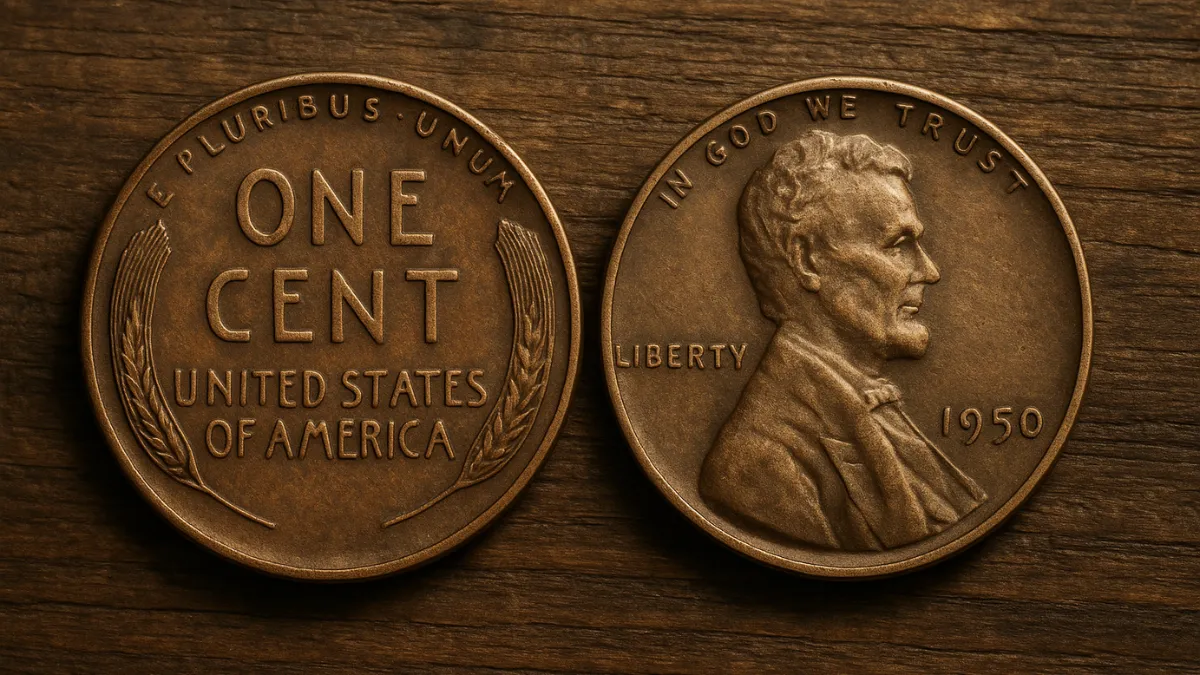What if a simple penny sitting in your change jar could change your life forever?
Imagine discovering a coin in your loose change that’s worth a small fortune. That’s the reality for a lucky few who’ve stumbled upon the ultra-rare 1943 Lincoln Wheat Penny — a coin that can fetch up to $800,000 on the collectors’ market.
Even more intriguing, this valuable coin might still be hiding in ordinary places — tucked in jars, hidden in old coin collections, or even stashed in forgotten bank rolls. Let’s uncover what makes this penny so special, how to spot one, and why coin hunters are still eagerly searching.
What Is the Lincoln Wheat Penny?
The Lincoln Wheat Penny was first minted in 1909 and continued until 1958. It features Abraham Lincoln on the front, designed by Victor D. Brenner, and a pair of wheat stalks on the reverse.
While most Wheat Pennies are only worth a few cents, select varieties — due to errors or rare circumstances — can be extremely valuable to collectors, especially those from specific years like 1943.
Why the 1943 Lincoln Wheat Penny Is So Valuable
During World War II in 1943, the U.S. Mint began producing pennies from zinc-coated steel to conserve copper for the war. However, a few copper planchets from previous years accidentally got mixed in and were struck into pennies.
These bronze pennies are incredibly rare and highly coveted. Among them, the ones minted in Philadelphia (without a mint mark) can be valued as high as $800,000 if in pristine condition. With only a small number known to exist, their rarity drives up their market value.
How to Identify the $800K Penny
Want to know if you’re holding one of these rare coins? Here’s how to tell:
- Year
The coin must be marked with the year 1943. - Color
A bronze penny will have a brown or reddish tone, unlike the usual silver-gray color of 1943 steel pennies. - Magnet Test
Steel pennies are magnetic. If the coin sticks to a magnet, it’s steel. If it doesn’t, you might have a bronze version. - Weight
Bronze pennies weigh approximately 3.11 grams, while steel ones weigh about 2.7 grams. - Mint Mark
The Philadelphia Mint versions have no mint mark and are the most valuable, though coins from Denver (D) and San Francisco (S) also hold significant value.
If your coin matches these traits, consider sending it to a grading service such as PCGS or NGC for authentication.
Could It Still Be in Circulation?
Yes — and that’s what makes the 1943 bronze penny so fascinating. Because most people overlook everyday change, rare coins can still be hiding in plain sight — inside drawers, savings jars, or even passed around in daily transactions.
Since billions of pennies are minted annually, it’s entirely possible that a few of these extraordinary coins are yet to be found.
The 1943 bronze Wheat Penny remains one of America’s most famous rare coins. Its value, reaching up to $800,000, reminds us that even the smallest items can hold incredible worth — sometimes hiding in the most unexpected places.
FAQ’s
Why is the 1943 Lincoln Wheat Penny worth $800K?
The high value comes from a rare mistake in 1943, when a few bronze coins were struck during a time when pennies were being made from steel to conserve copper during WWII.
How can I tell if I have the rare 1943 bronze Wheat Penny?
Check for a 1943 date, copper color, non-magnetic property, and a weight around 3.11 grams. If it fits these criteria, have it assessed by a coin grading expert.
Is it true that this rare penny could still be in circulation?
Yes, coin experts believe some 1943 bronze pennies might still be in old collections or everyday circulation. That’s why it’s smart to examine your change closely.
Which mint mark is most valuable on the 1943 bronze penny?
The version without a mint mark (Philadelphia) is the most valuable. Still, coins from Denver (“D”) and San Francisco (“S”) are also extremely rare and prized.
Where should I take a 1943 penny for verification?
If you suspect you have a rare coin, contact a trusted grading company like PCGS or NGC to confirm its authenticity and determine its value.
Susan is a seasoned finance writer with a knack for breaking down complex money topics into clear, actionable advice. With years of experience in personal finance, investing, and market trends, she empowers readers to make smarter financial decisions. Her work has been featured in leading finance blogs and publications, where she combines sharp analysis with relatable storytelling. Whether it’s budgeting, wealth-building, or decoding the latest economic shifts, Susan’s mission is to help people take control of their financial future with confidence.
